Intro
From making deliveries to filming stunning aerial views, drones have become a crucial component of technology in the 21st century. Drones are becoming more integrated into our daily lives and it’s essential to understand what they are and how they operate. So buckle up, as we take a journey to explore the fascinating world of drones.
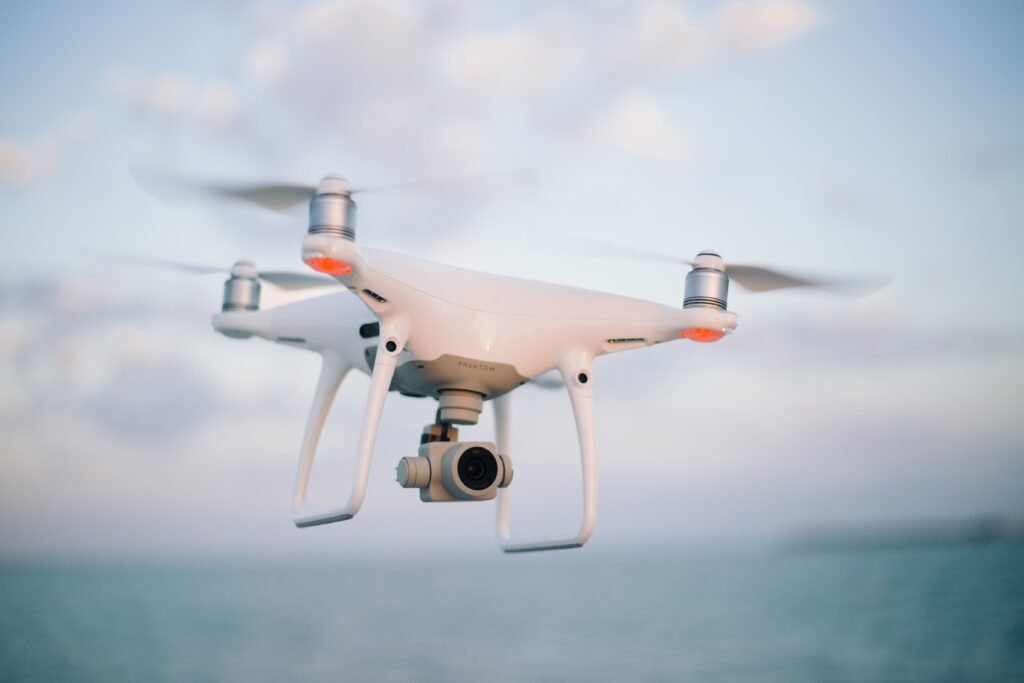
Understanding what a Drone is
Have you ever pondered about the intriguing device that whizzes across the sky, defying gravity with effortless grace? That’s a drone for you! Officially referred to as an unmanned aerial vehicle (UAV), a drone is akin to a flying robot that has the capability of either being controlled remotely or autonomously traversing the skies through pre-programmed flight paths housed within its onboard system.
An interesting fact about drones is their size versatility; they can be as diminutive as a bug, termed nano drones, or have the mammoth stature of a jet plane, a type typically used in military operations. However, don’t be fooled by the disparity in size. Regardless of their physical dimensions, the fundamental operating concept of these sky-bound machines remains consistent. They are the epitome of advanced technology and innovation, merging several complex systems to facilitate their flight and purpose. Whether it’s performing breathtaking aerial stunts or delivering your favorite pizza, drones have truly revolutionized the way we perceive technology and its infinite potential.
The Components that Make up a Drone
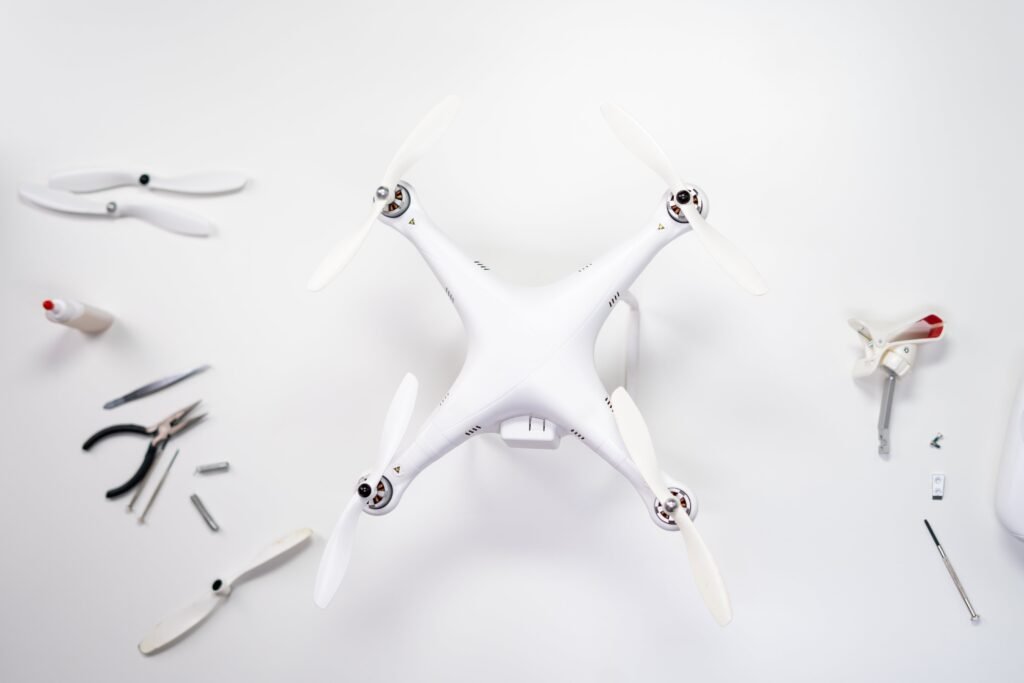
Peek under the hood of a drone, and you’ll find a world of complex parts, each playing a pivotal role in the drone’s operation. At the heart of every drone lies its body frame, a robust structure that houses the inner workings of the device, providing a foundation for its intricate components. It is in this frame that the magic truly unfolds.
Lend your ears to the drone’s motor, the powerhouse that sets the propellers in motion. As the propellers whirl around in a harmonious rhythm, they craft an invisible whirlpool of air beneath them, creating the lift that propels the drone into the sky. This crucial dance of motion and energy is akin to the helicopter’s operation, albeit on a smaller scale.
Nestled within the frame, you will also find the lifeline of the drone, the battery. This power source fuels the drone’s motor, breathing life into the contraption and enabling it to defy gravity. Without the battery, a drone would be little more than an expensive paperweight.
Directing the drone’s actions is the role of the controller. This gadget is essentially the drone’s brain, sending directives to the drone, which then obediently performs its given tasks. The controller uses a sophisticated coding system, allowing the drone to interpret its commands.
Last but not least, the onboard computer sits humbly within the drone’s body, receiving and processing instructions from the controller. Acting as the drone’s interpreter, the onboard computer is crucial in ensuring the drone behaves as intended. With a series of complex algorithms and codes, it orchestrates the actions of the drone, from simple hovering to complex maneuvers.
In a nutshell, the drone is a marvel of technology, a symphony of individual parts working together in perfect harmony. Each component plays its own vital role, and the absence of any one part could ground the drone. It’s a beautiful dance of science, technology, and innovation, all coming together to create this incredible piece of machinery we call a drone.
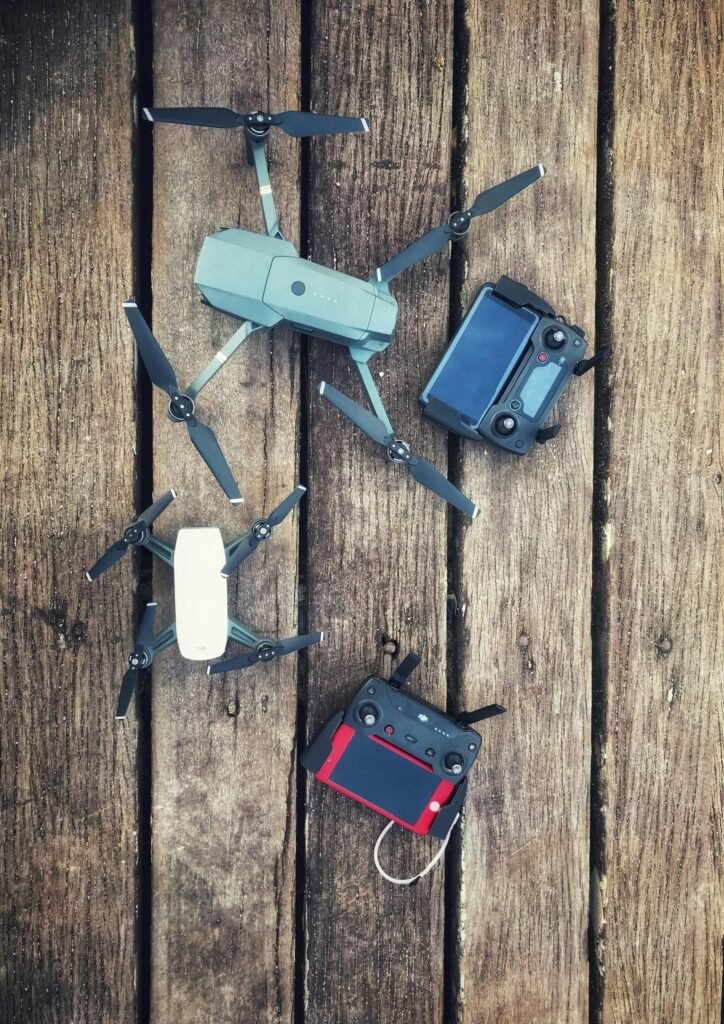
The Technology behind Drone Operation
The essence of drone operation is a marvel that blends aeronautics, wireless communication, and global navigation. This mecca of technologies is what makes drones tick and sets them soaring across the sky. Imagine the drone as an agile puppet and the controller as a skilled puppeteer, transmitting signals to the puppet through invisible strings.
These strings are essentially wireless connections, often radiating through radio frequency. They allow the puppeteer to remotely manipulate the drone’s movements and actions, making the drone pirouette in the air, zip across landscapes, or hover silently like a hummingbird in bloom.
The drone’s controller, acting as the puppeteer, dispatches commands to the onboard computer nestled within the drone’s belly. Acting as the translator, the onboard computer decodes these commands and translates them into actions that the drone follows obediently.
But how does a drone know its location or hold its position against the wind? That’s where Global Positioning System (GPS) comes into play. The GPS feeds the drone with coordinates, enabling it to know its precise location at all times. This system allows drones to stay put in a specific location, effortlessly combat wind gusts, and navigate through a preset flight path.
Remember, the dance of a drone isn’t the work of just one technology; instead, it’s the result of a blend of several technologies singing in harmony. Aeronautics lays the foundation of flight, wireless technology orchestrates the communication, and the GPS system serves as the compass guiding the drone through the vast sky. Each piece of the puzzle plays an integral part in the fascinating operation of drones.
The Use of Sensors and Cameras in Drones
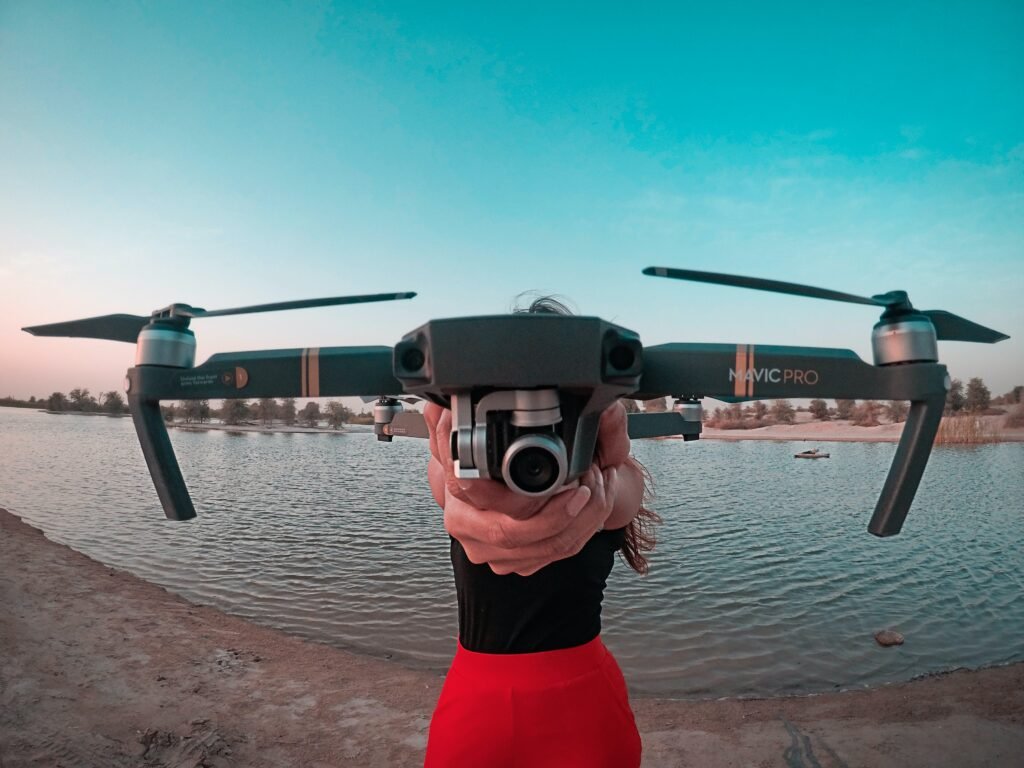
Imagine a drone as an eagle soaring in the sky, with its keen eyes spotting prey and its sharp senses alert to the slightest rustle in the wind. For a drone, its eyes and senses come in the form of advanced cameras and sensors.
In the drone world, cameras serve as the aerial eye, granting us a bird’s eye view of the world beneath. These cutting-edge cameras capture breathtaking panoramas, riveting film scenes, or detailed images of infrastructure, depending on the drone’s purpose. Some high-tech drones are even equipped with infrared or thermal imaging capabilities, allowing them to see through darkness and dense smoke, proving indispensable in search and rescue missions or firefighting operations.
On the other hand, sensors act as the drone’s intuitive senses. They can detect the presence of obstacles, helping the drone to navigate safely in complex environments. Sensors also help the drone maintain its equilibrium, counteracting the buffeting winds and maintaining stable flight. Furthermore, sensors enable precise landings, ensuring the drone returns safely to its base. The sophistication of these sensors can greatly enhance a drone’s functionality, making it a more efficient tool in any field.
Imagine a drone scanning a farmer’s field, its cameras capturing detailed images of the crops while sensors detect variations in soil moisture or plant health. Or picture a drone assisting in a search and rescue operation, its infrared camera spotting a lost hiker in the dense forest, while its sensors avoid colliding with the tree canopy.
So, whether it’s avoiding a collision or capturing an Oscar-worthy aerial shot, the incorporation of sensors and cameras in drones vastly broadens their range of capabilities and applications. These components truly turn drones into our eyes and ears in the sky, offering us unprecedented access and perspectives, and making drones one of the most innovative and versatile tools of our generation.
Applications of Drones in Different Fields
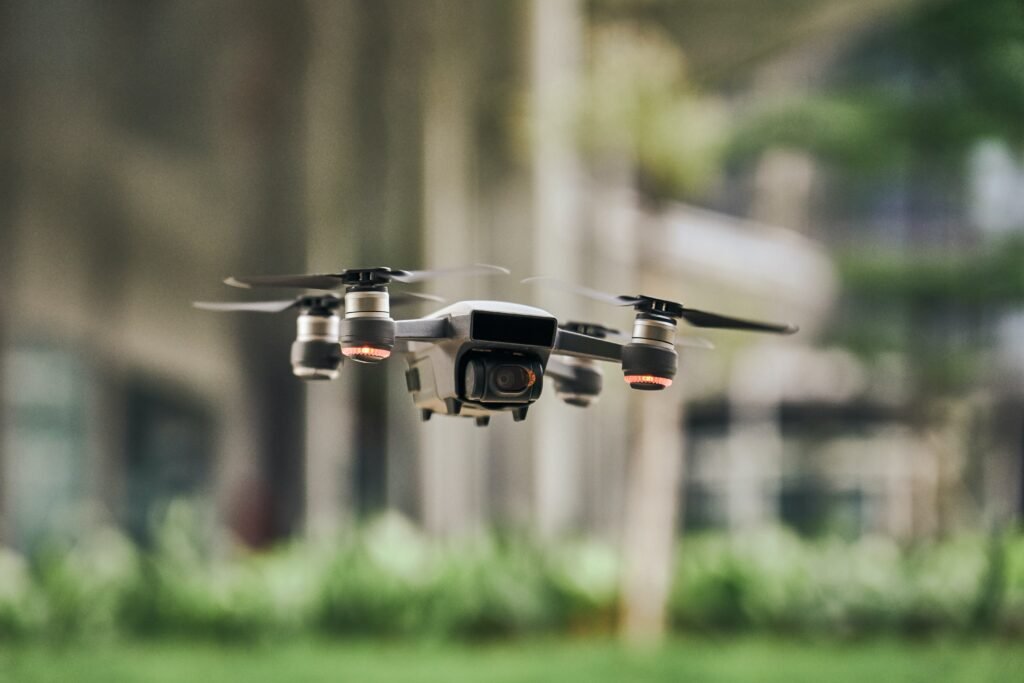
Drones, with their expansive range of capabilities and versatility, have seamlessly woven themselves into numerous industries and applications. These soaring ambassadors of technology have revolutionized the media landscape, offering spectacular aerial photography and filming options. With their high-tech cameras capturing stunning, sky-high perspectives, drones have introduced a new dimension to filmmaking and photography.
Venture into the expansive fields of agriculture, and you’ll witness drones diligently monitoring crops, using both their keen “eyes” (cameras) and “senses” (sensors). They scan fields for signs of disease, pests, and inadequate hydration, providing farmers with critical data to optimize their yields. Moreover, drones can efficiently spray pesticides across vast farmlands, their aerial advantage ensuring a uniform application while minimizing wastage.
Switch the scene to a disaster-stricken area, and drones emerge as unsung heroes. Their cameras and sensors navigate through dense smoke, debris, or treacherous terrains, assisting in search and rescue missions, or delivering essential aid to those in need. Their ability to access hard-to-reach areas makes them invaluable assets in such critical situations.
Step into the realm of defense and security, and drones take on a more serious role. Armed forces across the globe employ these flying sentinels for surveillance and reconnaissance, their discreet operation proving critical in gathering intelligence. Their larger counterparts, the unmanned combat aerial vehicles (UCAVs), are even capable of targeted attacks, providing a strategic advantage while reducing the risk to human lives.
The world of logistics and delivery is also catching up with drone technology. Picture this: You place an online order, and in no time, a drone is hovering outside your window, parcel in tow. This isn’t a sci-fi movie, but a reality in the making, with companies like Amazon testing drone delivery services.
From fields and forests to battlefields and backyards, drones are rapidly becoming an integral part of our lives, revolutionizing industries with their adaptability and technological prowess. This wide spectrum of drone applications is merely the tip of the iceberg, as we continue to explore new possibilities and horizons with these remarkable machines.
The Future of Drones
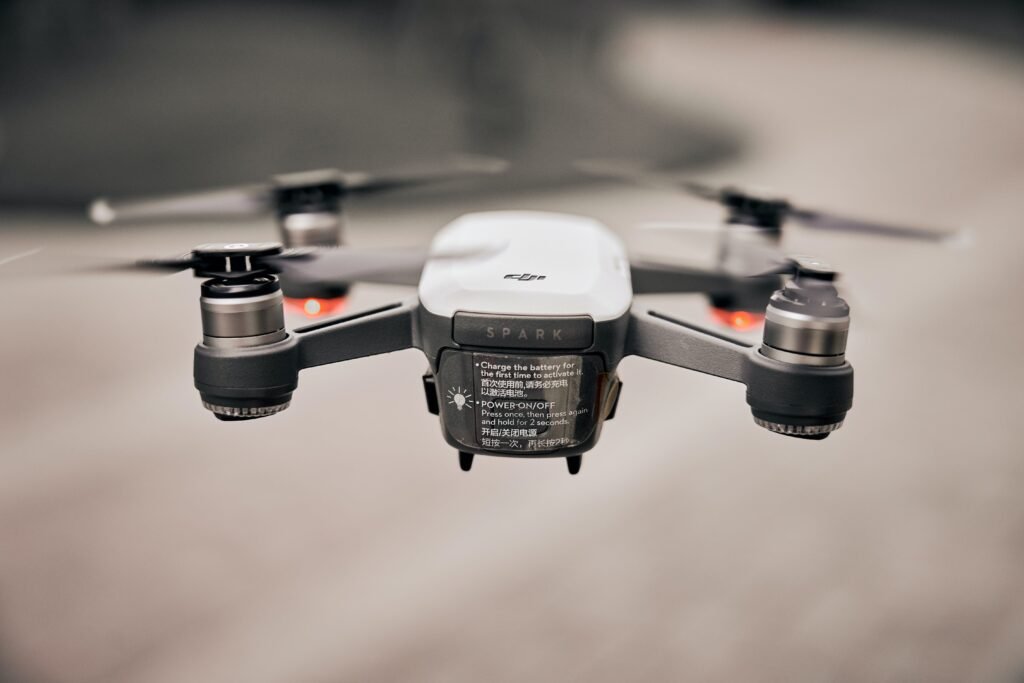
As we prepare to turn the page into the next chapter of drone technology, we stand on the brink of some truly astounding advancements. Picture the bustling cityscape of the future; drones could potentially be buzzing overhead, deftly managing traffic congestion and ensuring smooth navigation. Could our skies be dotted with these agile marvels, aiding in wildlife conservation efforts by monitoring habitats and tracking animal populations? The possibilities are simply fascinating!
And it doesn’t end there. Imagine sitting comfortably in a drone, being whisked away to your desired location. No, this isn’t a scene from a futuristic movie, but a very real prospect! Drones are poised to revolutionize the transportation sector by introducing the concept of passenger drones or drone taxis. These unmanned aerial vehicles could provide a fast, efficient, and green solution for urban mobility in the future.
But perhaps one of the most electrifying aspects of drone technology’s future lies in the realm of artificial intelligence (AI). Envision drones equipped with AI, capable of making complex decisions autonomously. These drones could independently adapt to their environment, carry out tasks without human intervention, and even learn from their past experiences. Whether it’s navigating through a dense forest for a search and rescue mission or inspecting a hazardous chemical plant, AI-driven drones could accomplish these tasks more safely and efficiently.
As we stand at the dawn of these fascinating advancements, it’s clear that drones are not merely about flying anymore; they represent a fusion of robotics, AI, and aeronautics. A world where drones are an integral part of our everyday lives is no longer a distant dream but an emerging reality. So, as we gear up to embrace this exciting future, we can truly appreciate how drones have evolved from mere playthings to crucial pieces in our technological puzzle.
So strap in, as the drone journey is just beginning, and the future is indeed looking sky high! Hold on tight, as the era of drones promises a thrilling flight ahead. And remember, the sky isn’t the limit for these wonders; it’s just the beginning!
